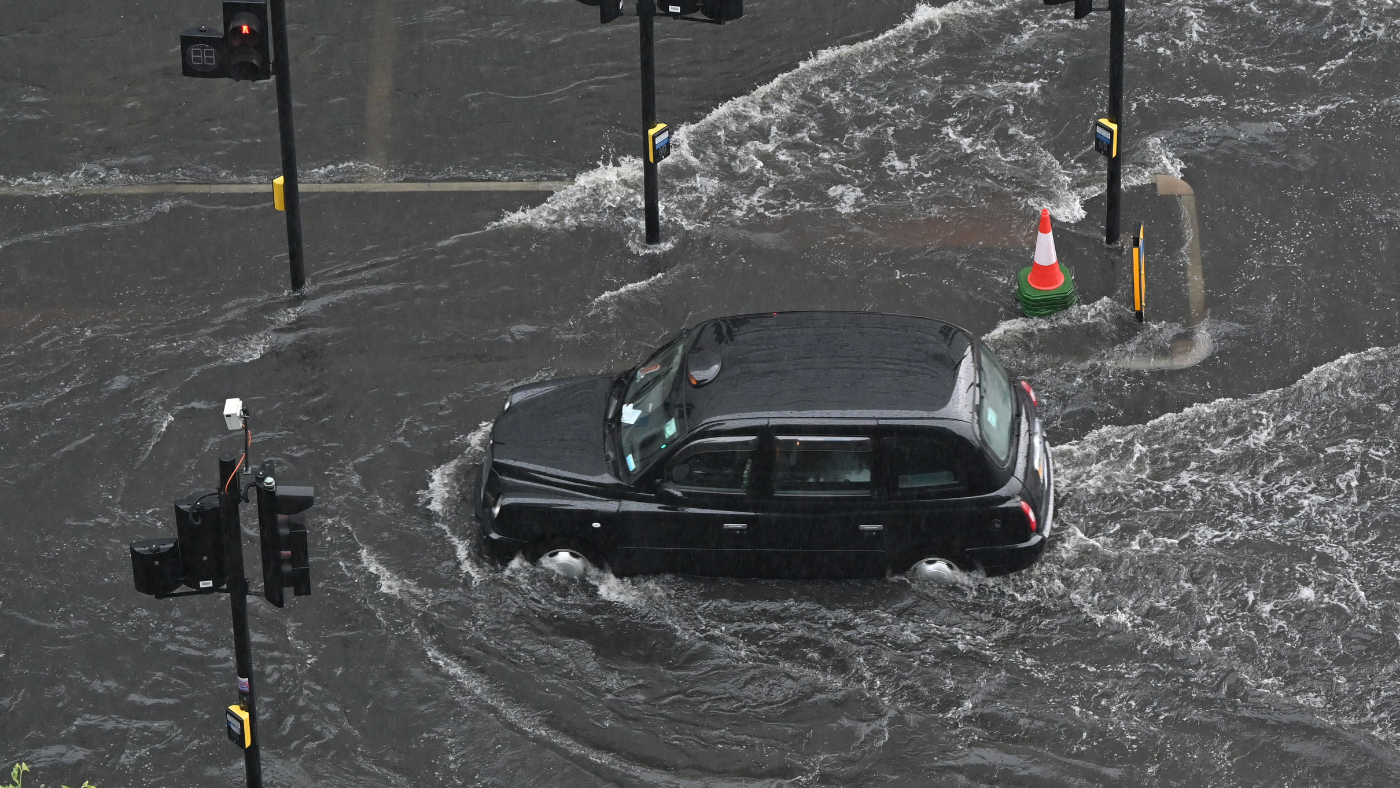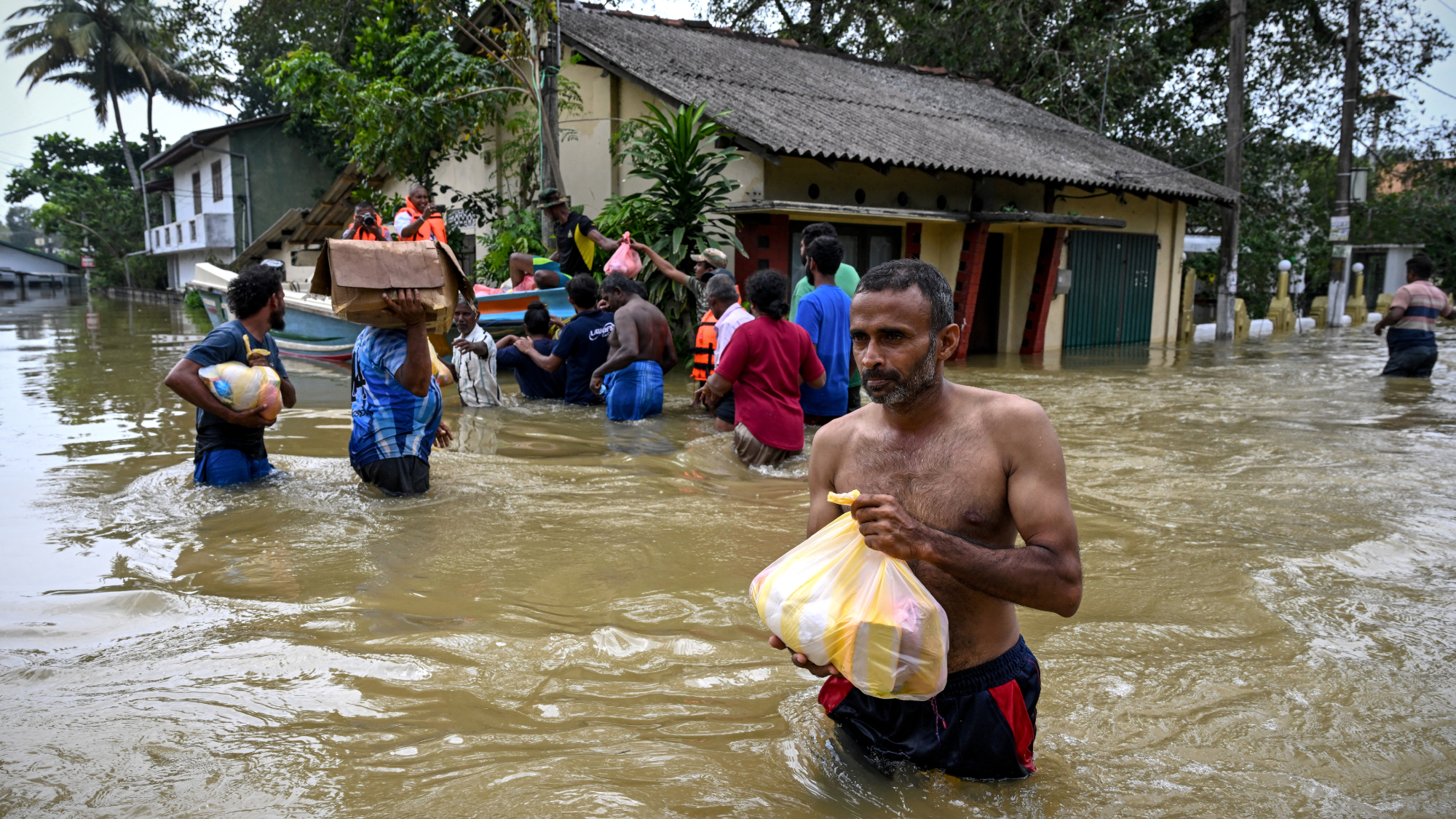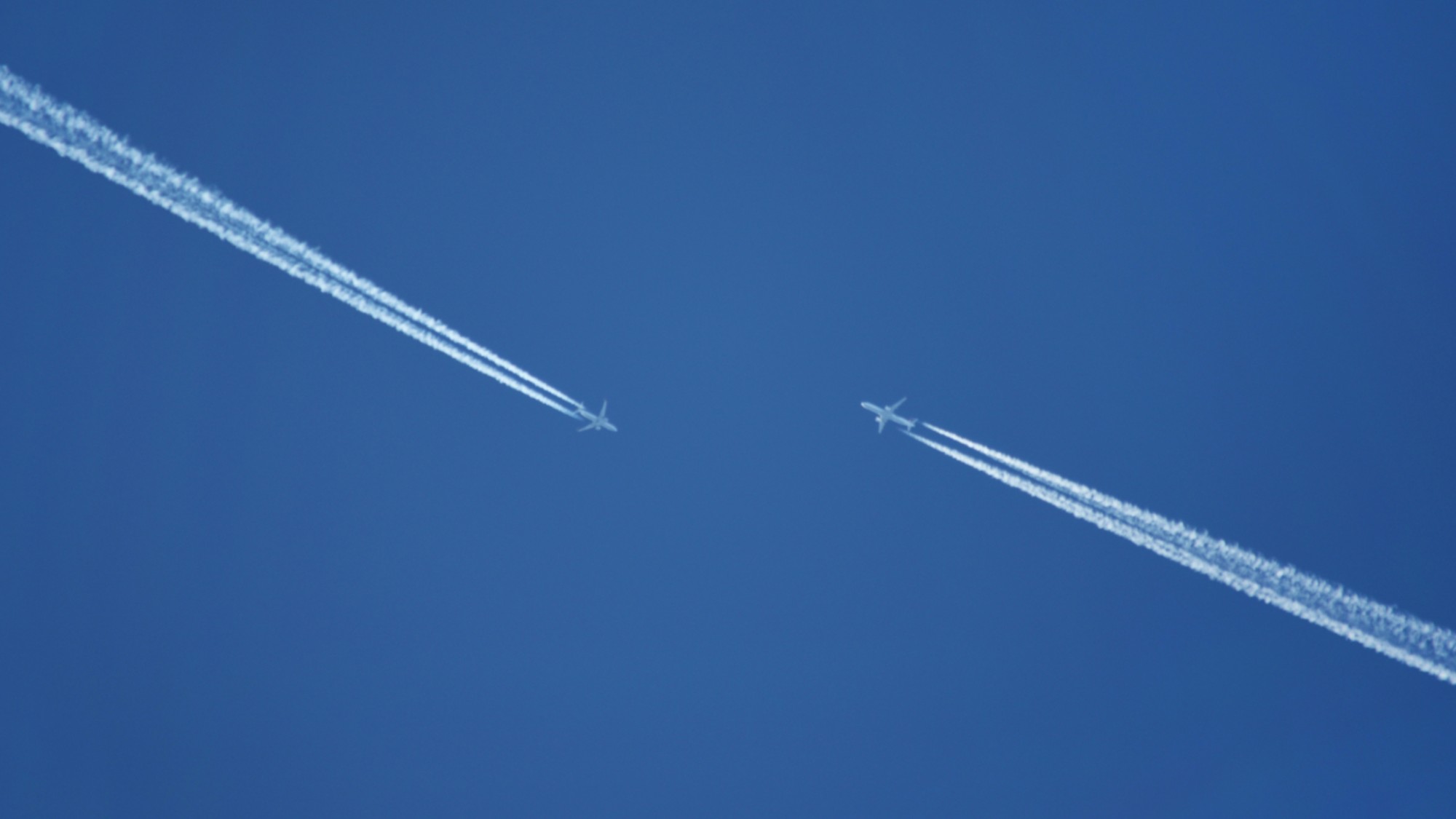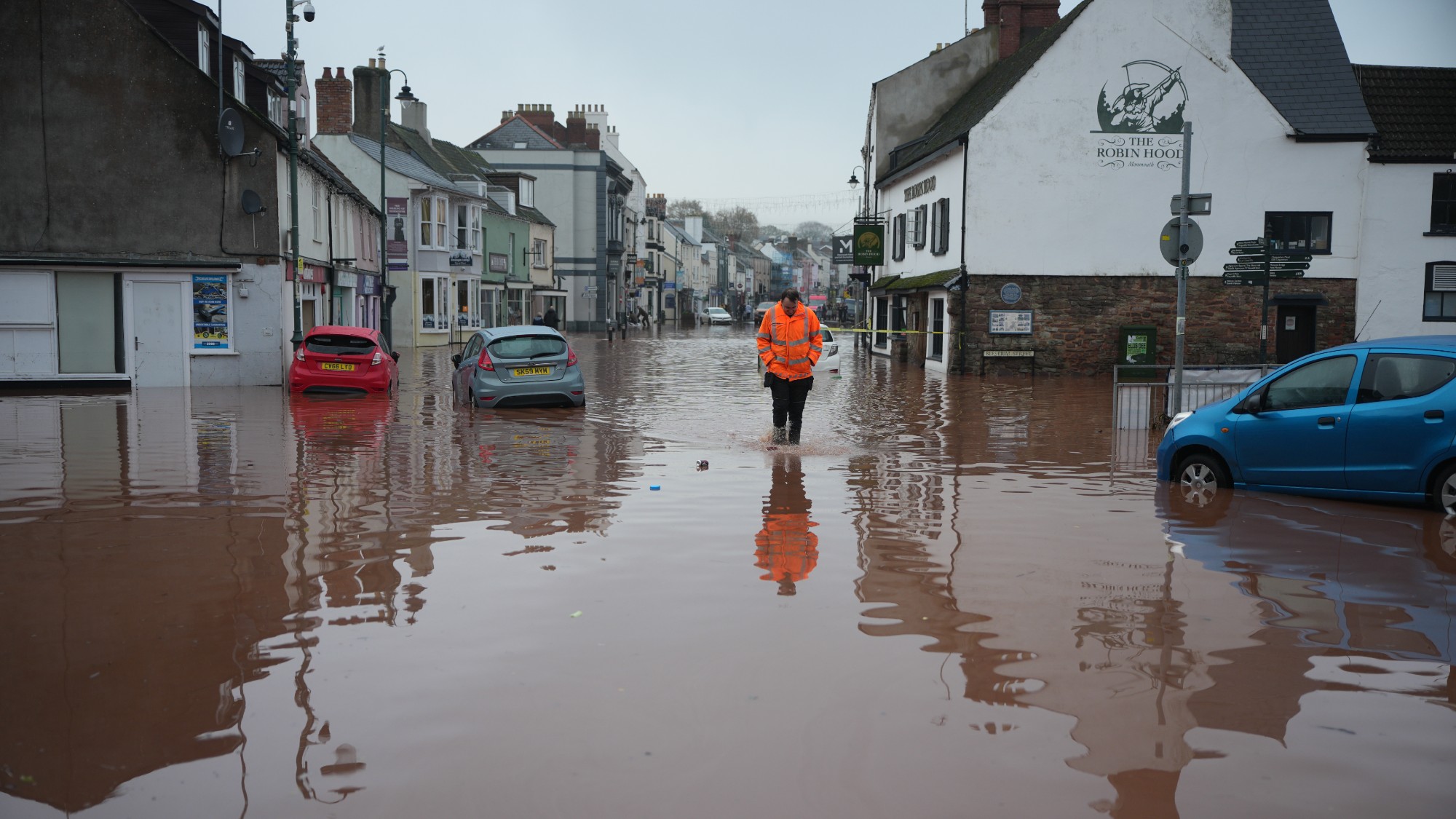What causes flooding?
Government hopes £5.2bn flood defence plan and lower emissions can protect UK homes and businesses

Flash floods once again brought chaos to London this week, shutting down two underground lines and submerging roads after heavy rain hit the capital.
Signal failures caused severe delays on the District, Circle, and Hammersmith and City Lines, and a stretch of the overground service between Kensington Olympia and Clapham Junction also disrupted.
It is not the first time that flooding has caused chaos in the capital this year, and many more stations could be at risk according to an unpublished Transport for London report. But it is not just transport that is affected by floods in urban areas.
The Week
Escape your echo chamber. Get the facts behind the news, plus analysis from multiple perspectives.

Sign up for The Week's Free Newsletters
From our morning news briefing to a weekly Good News Newsletter, get the best of The Week delivered directly to your inbox.
From our morning news briefing to a weekly Good News Newsletter, get the best of The Week delivered directly to your inbox.
Businesses have been hit hard by damage to property, and new housing developments that have been built on areas vulnerable to flooding in and around the capital could also be in danger.
“All that extra concrete means water struggles to flow away,” The Economist said. And with the Met Office warning that extended periods of extreme winter rainfall are seven times more likely now, the paper’s warning that “London’s flooding is sure to worsen” may soon be put to the test.
Causation
Different types of floods are caused, and in some cases exacerbated, by multiple factors.
A free daily email with the biggest news stories of the day – and the best features from TheWeek.com
Flash flooding, like that seen in the capital this week, occurs very quickly. An overwhelming level of rainfall can “instantly” turn a “babbling brook or even a dry wash into rushing rapids that sweep everything in their path downstream”, National Geographic said.
In cities, it is typically the result of high rainfall and inadequate infrastructure, or a lack of natural drainage systems. If manmade drains are overwhelmed by the volume of rain, and it cannot be absorbed by other sources, water quickly begins to mass at surface level.
Typically, flooding can be anticipated, allowing residents to evacuate or take measures to protect both themselves and their properties.
River flooding is generally caused by heavy rains falling at a higher point on the river’s course, which then travels downstream. When the volume of water reaches a point where the river's banks can no longer contain it, they burst. Melting snow or ice can also cause this type of flooding.
Coastal flooding is the result of storm surges and high tides, with strong winds carrying waves further inland than usual. This can cause extensive damage to low-lying seaside regions.
Both the severity and frequency of flooding is likely to increase with climate change, forecasters have repeatedly warned. This is in part because rising global temperatures “mean more rain”, the United Nations Environment Programme said.
Higher temperatures lead to increased rates of evaporation, causing more clouds to form. More moisture can be held in the atmosphere at these higher temperatures, which can mean more rain, at greater intensities, and with downpours lasting for longer.
Rising sea levels can also result in more damaging storm surges. The volume of water that can come ashore during a storm will increase with higher sea levels, and the damage could be more widespread.
Solutions
Flooding has expensive consequences. Angela Merkel’s cabinet allocated €30bn (£25.5bn) to help repair damage caused by catastrophic flooding in western Germany in July when major rivers where overwhelmed by rainwater and burst their banks.
More than 180 people lost their lives during the disaster, which left roads “torn up and washed out”, and power lines “destroyed”, Deutsche Welle said. The region now “needs visionary ideas” to ensure better protection from future disasters, and “become a model region” that shows how people can live with climate change and its most devastating impacts.
The “tragic” events provided a “sobering reminder of how devastating flooding can be”, said Environment Secretary George Eustice, as the UK government committed earlier this year to investing £5.2bn in flood and coastal defences between 2021 and 2027. Southeast England is expected to receive the highest level of investment, followed by the Southwest and Yorkshire.
Roughly 2,000 new defence schemes will help to avoid £32bn of wider economic damage, the Department for Environment, Food and Rural Affairs forecast. It has estimated that 336,000 properties will be protected by the investment.
Infrastructure, such as sea walls and tide gates, create barriers that help to protect areas at risk of flooding.
London’s tidal flood defences currently protect £200bn of property, and the government plans to refurbish and replace these flood walls, embankments, pumping stations and flood gates to better protect the capital. Planning measures like “permeable pavements and green roofs” could also help to provide better drainage in urban areas, flood expert Dr Linda Speight told the BBC.
There are also plans to improve natural flood management in areas including Leeds and Cumbria. These measures, which may include tree planting and the restoration of peat bogs, help to slow down the amount of river water travelling downstream.
Efforts to curb climate change, such as limiting emissions and reaching net zero, will also play a crucial part in alleviating flooding misery in the coming years.
Julia O'Driscoll is the engagement editor. She covers UK and world news, as well as writing lifestyle and travel features. She regularly appears on “The Week Unwrapped” podcast, and hosted The Week's short-form documentary podcast, “The Overview”. Julia was previously the content and social media editor at sustainability consultancy Eco-Age, where she interviewed prominent voices in sustainable fashion and climate movements. She has a master's in liberal arts from Bristol University, and spent a year studying at Charles University in Prague.
-
 The ultimate films of 2025 by genre
The ultimate films of 2025 by genreThe Week Recommends From comedies to thrillers, documentaries to animations, 2025 featured some unforgettable film moments
-
 Political cartoons for January 3
Political cartoons for January 3Cartoons Saturday's political cartoons include citizen journalists, self-reflective AI, and Donald Trump's transparency
-
 Into the Woods: a ‘hypnotic’ production
Into the Woods: a ‘hypnotic’ productionThe Week Recommends Jordan Fein’s revival of the much-loved Stephen Sondheim musical is ‘sharp, propulsive and often very funny’
-
 Environment breakthroughs of 2025
Environment breakthroughs of 2025In Depth Progress was made this year on carbon dioxide tracking, food waste upcycling, sodium batteries, microplastic monitoring and green concrete
-
 Crest falling: Mount Rainier and 4 other mountains are losing height
Crest falling: Mount Rainier and 4 other mountains are losing heightUnder the radar Its peak elevation is approximately 20 feet lower than it once was
-
 Death toll from Southeast Asia storms tops 1,000
Death toll from Southeast Asia storms tops 1,000speed read Catastrophic floods and landslides have struck Sri Lanka, Indonesia, Thailand and Malaysia
-
 Can for-profit geoengineering put a pause on climate change?
Can for-profit geoengineering put a pause on climate change?In the Spotlight Stardust Solutions wants to dim the sun. Scientists are worried.
-
 How will climate change affect the UK?
How will climate change affect the UK?The Explainer Met Office projections show the UK getting substantially warmer and wetter – with more extreme weather events
-
 Can the UK do more on climate change?
Can the UK do more on climate change?Today's Big Question Labour has shown leadership in the face of fraying international consensus, but must show the public their green mission is ‘a net benefit, not a net cost’
-
 Did Cop30 fulfil its promise to Indigenous Brazilians?
Did Cop30 fulfil its promise to Indigenous Brazilians?Today’s Big Question Brazilian president approves 10 new protected territories, following ‘unprecedented’ Indigenous presence at conference, both as delegates and protesters
-
 Can the world adapt to climate change?
Can the world adapt to climate change?Today's Big Question As the world gets hotter, COP30 leaders consider resilience efforts